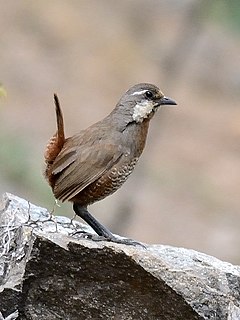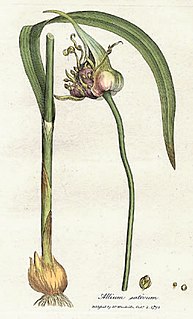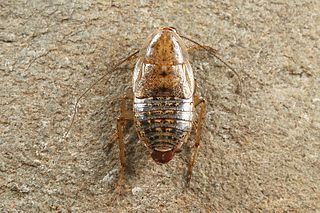
A definition is a statement of the meaning of a term. Definitions can be classified into two large categories, intensional definitions and extensional definitions. Another important category of definitions is the class of ostensive definitions, which convey the meaning of a term by pointing out examples. A term may have many different senses and multiple meanings, and thus require multiple definitions.
Genus is a taxonomic rank used in the biological classification of living and fossil organisms as well as viruses, in biology. In the hierarchy of biological classification, genus comes above species and below family. In binomial nomenclature, the genus name forms the first part of the binomial species name for each species within the genus.

Amygdaloideae is a subfamily within the flowering plant family Rosaceae. It was formerly considered by some authors to be separate from Rosaceae, and the family names Prunaceae and Amygdalaceae have been used. Reanalysis from 2007 has shown that the previous definition of subfamily Spiraeoideae was paraphyletic. To solve this problem, a larger subfamily was defined that includes the former Amygdaloideae, Spiraeoideae, and Maloideae. This subfamily, however, is to be called Amygdaloideae rather than Spiraeoideae under the International Code of Nomenclature for algae, fungi, and plants as updated in 2011.

Selaginella is the sole genus of vascular plants in the family Selaginellaceae, the spikemosses or lesser clubmosses.

Clematis is a genus of about 300 species within the buttercup family, Ranunculaceae. Their garden hybrids have been popular among gardeners, beginning with Clematis × jackmanii, a garden standby since 1862; more hybrid cultivars are being produced constantly. They are mainly of Chinese and Japanese origin. Most species are known as clematis in English, while some are also known as traveller's joy, a name invented for the sole British native, C. vitalba, by the herbalist John Gerard; virgin's bower for C. terniflora, C. virginiana, and C. viticella; old man's beard, applied to several with prominent seedheads; leather flower for those with fleshy petals; or vase vine for the North American Clematis viorna.
Plagiaulacida is a group of extinct multituberculate mammals. Multituberculates were among the most common mammals of the Mesozoic, "the age of the dinosaurs". Plagiaulacids, an informal suborder, are the most basal of this order, and ranged from the Middle Jurassic Period to the Lower Cretaceous Period of the northern hemisphere.
Paulchoffatiidae is a family of extinct mammals that lived predominantly during the Upper Jurassic period, though a couple of genera are known from the earliest Cretaceous. Some undescribed fossils from the Middle Jurassic of England may represent earlier versions. Remains have been reported from Portugal, Spain and England. Paulchoffatiids were members of the order Multituberculata. They were relatively early representatives and are within the informal suborder of "Plagiaulacida". The family was named by G. Hahn in 1969, and it honors the Portuguese geologist Léon Paul Choffat. Two subfamilies are recognized.

The tapaculos are a family, Rhinocryptidae, of small suboscine passerine birds, found mainly in South America and with the highest diversity in the Andean regions. Three species are found in southern Central America.

The Crassulaceae, also known as the stonecrop family or the orpine family, are a diverse family of dicotyledon flowering plants characterized by succulent leaves and a unique form of photosynthesis, known as Crassulacean acid metabolism (CAM). Flowers generally have five floral parts. Crassulaceae are usually herbaceous but there are some subshrubs, and relatively few treelike or aquatic plants. Crassulaceae are a medium size monophyletic family in the core eudicots, among the order Saxifragales, whose diversity has made infrafamilial classification very difficult. The family includes approximately 1,400 species and 34–35 genera, depending on the circumscription of the genus Sedum, and distributed over three subfamilies. Members of the Crassulaceae are found worldwide, but mostly in the Northern Hemisphere and southern Africa, typically in dry and/or cold areas where water may be scarce, although a few are aquatic.

Sedum is a large genus of flowering plants in the family Crassulaceae, members of which are commonly known as stonecrops. The genus has been described as containing up to 600 species, subsequently reduced to 400–500. They are leaf succulents found primarily in the Northern Hemisphere, but extending into the southern hemisphere in Africa and South America. The plants vary from annual and creeping herbs to shrubs. The plants have water-storing leaves. The flowers usually have five petals, seldom four or six. There are typically twice as many stamens as petals. Various species formerly classified as Sedum are now in the segregate genera Hylotelephium and Rhodiola.

Ectobiidae is a family of the order Blattodea (cockroaches). This family contains many of the smaller common household pest cockroaches, among others. They are sometimes called wood cockroaches. A few notable species include:

In biological classification, taxonomic rank is the relative level of a group of organisms in a taxonomic hierarchy. Examples of taxonomic ranks are species, genus, family, order, class, phylum, kingdom, domain, etc.

Aulacephalodon is an extinct genus of medium-sized dicynodonts, or non-mammalian synapsids, that lived during Permian period, about 299-252 million years ago. Individuals of Aulacephalodon are commonly found in the Lower Beaufort Group of the Karoo Supergroup of South Africa and Zambia. Rising to dominance during the Late Permian, Aulacephalodon were the dominant terrestrial vertebrate herbivores until they became extinct during the Triassic. No living relatives of Aulacephalodon exist today. Two species have been named, the type species, A. bainii, and a second species, A. peavoti. However, debate exists among paleontologists if A. peavoti is a true member of the genus Aulacephalodon. Therefore, a majority of the information known about Aulacephalodon is in reference to discoveries about A. bainii.
Achromatorida is an order of non-pigmented intraerythrocytic parasitic alveolates belonging to the subclass Haemosporidiasina. The order was created by Jacques Euzéby in 1988.

Ectobius is a genus of non-cosmopolitan cockroaches native to Old World described by Stephens in 1835, belonging to the family Ectobiidae, subfamily Ectobiinae. This genus has been subject to a number of revisions.

Yinotheria is a proposed basal subclass clade of crown mammals that contains a few fossils of the Mesozoic and the extant monotremes. Today, there are only five surviving species, which live in Australia and New Guinea, but fossils have been found in England, China, Russia, Madagascar and Argentina. The surviving species consist of the platypus and four species of echidna. Contrary to other known crown mammals, they retained postdentary bones as shown by the presence of a postdentary trough. The extant members (monotremes) developed the mammalian middle ear independently.

Planuncus tingitanus s.l. is a working title for any of the species belonging to the Planuncus tingitanus species group, of the cockroach genus Planuncus. As the exact status of some the species in this group can not be determined without more research, the whole species complex is referred to by the name of the oldest species in the group sensu lato.

Allium is a genus of monocotyledonous flowering plants that includes hundreds of species, including the cultivated onion, garlic, scallion, shallot, leek, and chives. The generic name Allium is the Latin word for garlic, and the type species for the genus is Allium sativum which means "cultivated garlic".

Capraiellus panzeri is a species of non-cosmopolitan cockroach in the subfamily Ectobiinae: commonly known by its original (genus) name Ectobius panzeri.

Attaphila is a genus of cockroaches that live as myrmecophiles in the nests of leaf-cutting ants. They have been suggested to feed on the fungus their host ants farm, or on the cuticular lipids of ant workers. Attaphila are not attacked by host workers because they blend into the colony by mimicking the odour of their hosts ants. Female Attaphila are wingless and males have reduced wings. Since they cannot fly themselves, the cockroaches disperse to new host colonies either by riding on virgin host queens that depart for the mating flight, or by following pheromone trails laid by ant workers.
















